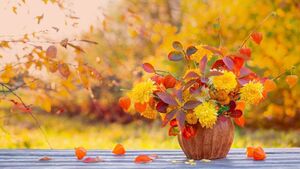Green Fingers: Hints of autumn tints

Many plants gradually change colour to give a totally different feel to the garden.
We are not a country known for autumn foliage colour but we see those beautiful displays of New England in the United States and would like to have some of that here too. Quite simply, as if we did not know it already, we are a misty, wet country and therefore rarely have the dry sunny weather that encourages good autumn colours.
The odd thing is we sometimes get a hint of the autumn even in the summer, where due to an unseasonal hiccup in the weather, some foliage displays appear. But apart from an exceptional dry autumn with its attendant fiery displays, the best we can expect is a short burst of colour now and then.
Within our native flora there are two plants that give a better than average autumn colour and they are the “Spindle” (Euonymus europeus) and “Guelder Rose” (Viburnum opulus), which both have coloured berries and foliage from October onwards, and they are attractive plants for the garden too. Fortunately for us, the nursery industry has long cultivated plants that show signs of having either autumn foliage or berries or both and these are the ones to choose for your garden.
Many plants gradually change colour to give a totally different feel to the garden. The leaves, as they prepare to drop for the winter, give a last great display of gold, yellow, bronze, red, orange or crimson. Trees are synonymous for providing autumn colours but other plants can give as much and we will mention a few as they would be great where space is restricted.
I do think that because space is usually a premium, plants chosen should, if possible, have an added interest outside the autumn colours, and it is these that I will mention below.
Very few people have the space for some of the best autumn colouring trees but there are many types that do not grow large and will suit normal-sized gardens, such as, the Japanese Maple called Acer palmatum and its varieties.
The “Snowy Mespilus” Amelanchier canadensis is a beautiful small tree with white flowers among the spring foliage, followed by rich hues of orange and red.
The “Sweet Gum” Liquidamber styraciflua ‘Slender Silhouette’ is a slow, narrow growing tree with glossy maple-shaped leaves, which turn orange-red over a long period.
Pyrus ‘Chanticleer’ has white flowers and glossy foliage followed by red–maroon colours from September until November.
Two groups of small trees, which, in addition to their early floral displays, give good autumn colours, are varieties of cherries and mountain ash. Finally, the “Stag’s Horn Sumach" Rhus typhina, once one of the most popular small trees around with beautiful large leaves, is renowned for autumn colouring.
The list of possibilities is long but would include varieties of Azalea (deciduous), Berberis, Cornus ‘Midwinter Fire’, Cotoneaster, Euonymus alatus, Forsythia and, lastly, the popular fruiting Blueberry with its brilliant autumn display.
Planting some containers for a decent display during autumn and winter is not that easy, as conditions are less favourable than the summer months. But it is worth creating some colour, especially in prominent positions, such as the front and back door, including perhaps the patio area.
Suitable plants include violas, pansies, primulas, cyclamen, heathers, ivies and foliage plants.
Plant them in a mixture so they look pleasing. There is no need for fresh compost or a feed as winter plants will be just sitting there, not growing.
If you have any queries or comments you are welcome to share them with me on 051-384273 or orchardstowngardencentre@hotmail.com and if of general interest I will include it in a future article.






